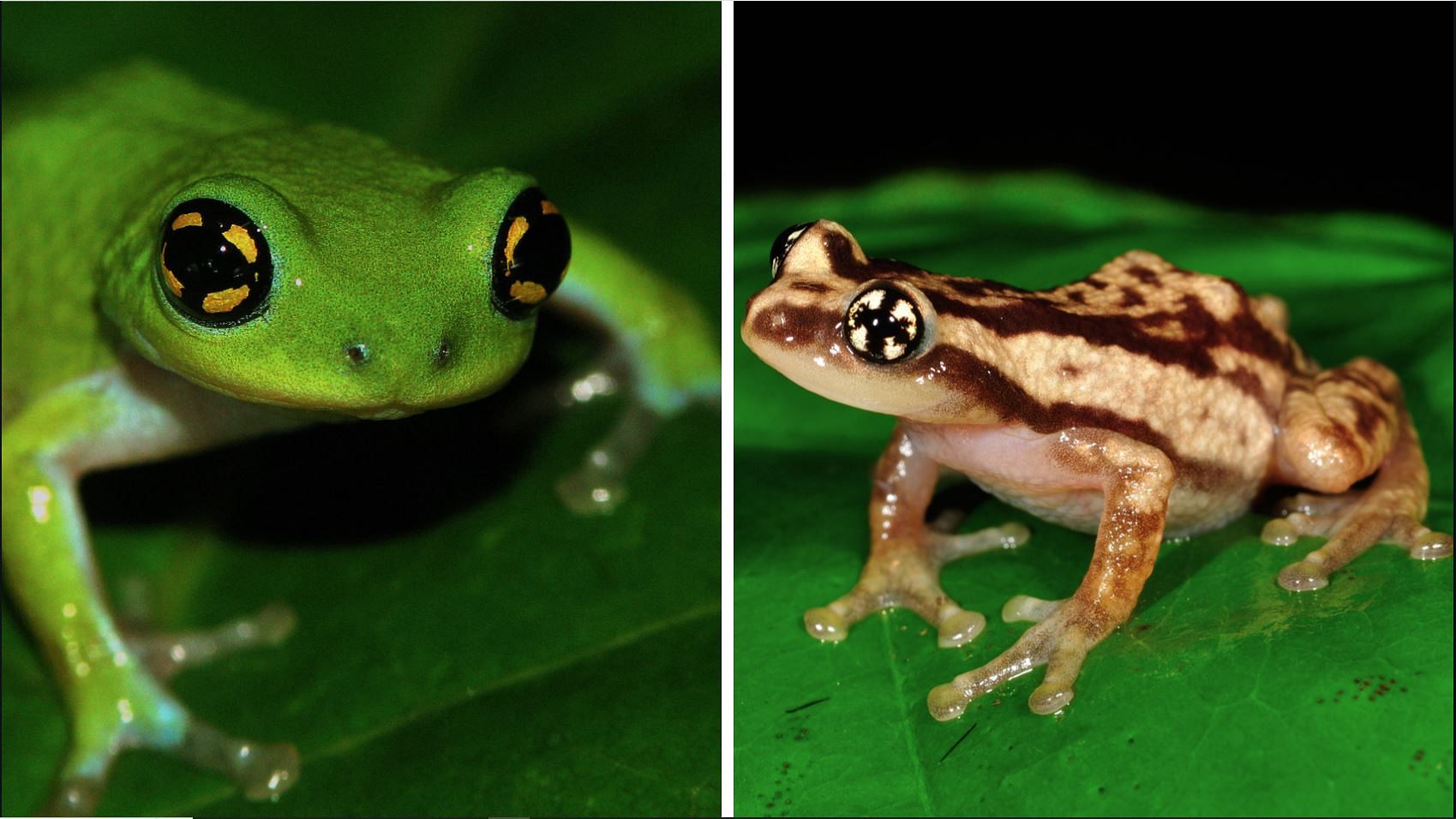
Two frog species, Raorchestes chalazodes and Raorchestes ochlandrae, with distinct iris patterns.
Credit: Courtesy K S Seshadri
Bengaluru: What do iris patterns in the eyes of frogs tell us? Do these diverse, intricate designs mean anything more than their obvious visual appeal? Are the patterns traced to where the frogs live and when they are active?
Largely unanswered questions set three Bengaluru researchers on an exploratory study, to find out if the patterns have an ecological function.
The researchers, at the Centre for Ecological Sciences (CES), Indian Institute of Science (IISc), compiled data on iris patterns, activity, and habit sourced from repositories and photographs.
Following an examination of iris patterns in 960 frog species across 47 families, K S Seshadri, S Gangothri, and Maria Thaker noted that, surprisingly, irises were not correlated with where a frog lived (e.g. aquatic or terrestrial) or when it was active (nocturnal or diurnal).
The researchers classified the iris patterns as reticulated (resembling a net), plain, dotted, and lined. Reticulated patterns were found to be the most common (726 of the 960 species studied) and the “most likely” ancestral character.
The study found a weak correlation with diel activity (the species’ activity over 24 hours), indicating that frogs with plain irises were more likely to be diurnal (active during the day) than nocturnal.
The Hoplobatrachus tigerinus frog.
Credit: Courtesy K S Seshadri
The study, published in Evolutionary Ecology, notes that the evolution of plain irises appears to have preceded the evolution of diel activity. It suggests that the ancestral reticulated irises transitioned to plain irises and then, the species transitioned from nocturnal to diurnal activity.
"Eyes are mesmerising, even those on frogs. So we couldn't help but try to understand their incredible diversity from an ecological and evolutionary perspective," Dr Maria Thaker, an associate professor in CES, IISc, said.
“The only association established was between the plain iris and diurnality and that is not conclusive either. It leads us to the possibility that these patterns may have evolved for other functions,” Seshadri, ecologist and currently a faculty at ATREE, told DH.
It is also possible that the stunning variation in these patterns is the result of neutral processes since these traits are of no particular benefit to the species.
The Rhacophorus malabaricus frog.
Credit: Courtesy K S Seshadri
The study points to the possibility of iris patterns functioning as signals for social interactions among frogs, like eye colour in birds and fish. Building on the positive correlation between plain irises and diurnality, the study posits that these patterns could also be used for anti-predator defence.
“A lack of pattern may offer the highest contrast of an iris against the body, making an anuran with plain irises of any colour, more conspicuous in diurnal conditions,” the research paper said.
Eye size and pupil shape have been linked to ecosystems – frogs can be tree-living, burrowing, semi-aquatic or terrestrial – but there is no strong validation of iris colour patterns evolving with the habitats.
"I could learn a lot about frogs and toads while examining the photographs. Sometimes, it was hard to stay motivated but the curiosity of knowing why frogs have such lovely eyes kept us going," S Gangothri, who interned in Prof Thaker's lab at IISc and is currently a PhD student at the University of California, said.
The researchers pitch the findings as an opportunity for a closer examination of iris patterns across taxonomic groups, to understand their adaptive features better. They propose advanced research to validate earlier hypotheses that trace iris colours to sexual selection and defence against predators.
“These findings indicate a possible connection between iris patterns and inter- or intra-species interaction. That, however, can be concluded only by studying frog behaviour a lot more carefully," Seshadri said.